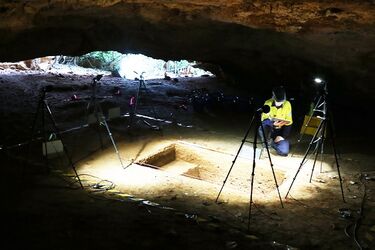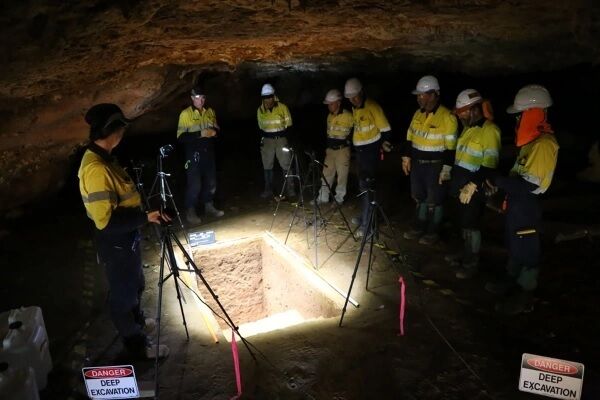A 50,000-year-old "time capsule" was found in Australia (photo)

An international team of scientists discovered an archaeological site on Barrow Island in Western Australia, which they called a "time capsule". The find provides a unique opportunity to explore the lives of the Aboriginal people who lived in this area 50,000 years ago.
The study, conducted by Sacramento State University with the participation of researchers from the University of Western Australia and traditional owners, was published in Quaternary Science Reviews.
Barrow Island, now 60 km from the mainland, used to be a hill overlooking the coast. Around 24,000 years ago, during the Ice Age, sea levels were 130m lower and Barrow was connected to the mainland. When the glaciers began to melt, the water level rose and the island was cut off. Since then, there has been no permanent population there.
The largest rock shelter on Barrow Island is located in Budi Cave. During excavations, traces of human life dating back 50,000 years were found here. The findings indicate that the diet of the aborigines changed over time: as the sea level rose, they began to eat more shellfish, crabs, turtles, and fish.


Aboriginal people used local limestone, rich in silica, to make tools. Knives for processing turtles and dugongs (aquatic mammals) were made from the shells of large sea snails because limestone knives dulled quickly.
Artifacts found at open archaeological sites differ from those found in a cave. The reason for this difference remains unknown.
During three years of research, 4,400 stone objects were found in 50 open locations. Most of them are made from rocks that are not found on the island but are characteristic of the Ashburton and Pilbara regions. This suggests that for 43,000 years the people who lived on Barrow Island transported or exchanged materials to make tools.
As the sea level rose, the aborigines began to use tools made of mollusk shells and limestone more often. Stone objects were probably preserved and used for grinding seeds, and processing wood, skins, and plant fibers.
If you want to receive the latest news about the war and events in Ukraine, subscribe to our Telegram channel!
